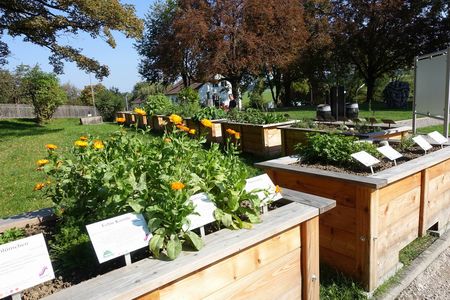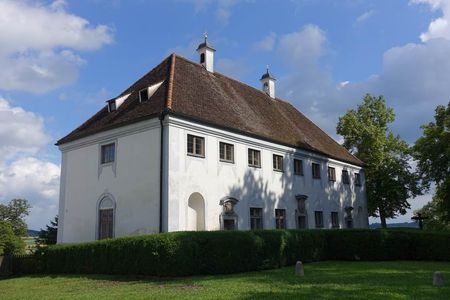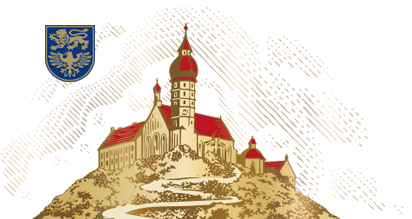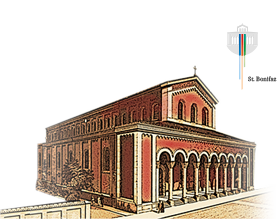Andechs herb garden
The raised beds of the Andechs herb garden are found in the monastery’s sculpture garden. They were established with the help of Steierl-Pharma GmbH in Herrsching, a producer of natural medicines, as an educational garden for visitors.

Tradition of medical science on the Holy Mountain
The roots of monastic medicine go back to Saint Benedict of Nursia (480-547). Around the year 527, he founded the Montecassino Monastery in southern Italy, for which he laid down extensive rules. Chapter 36, 1 of the Rule of Saint Benedict states: “Before all things and above all things, care must be taken of the sick.” While only higher-ranking people had received medical care thus far, the monks in keeping with Christian charity treated anyone who sought aid – even the homeless and the poor.
Andechser Apothekenliste
Most of the plants in this educational garden come from the “Andechser Apothekenliste”, a list of medicines that probably originates from the Tegernsee Monastery. The “Andechser Apothekenliste” is a historic pharmacy document from the 15th century. It provides an overview of medicines used in the Late Middle Ages and is part of a collection of handwritten documents, including a description of illnesses, medical formulations and instructions for the collection of herbs and medicinal plants.

From 1763 to 1811, the Andechs Monastery operated its own public pharmacy which was also the district pharmacy. The building exists to this day. Parts of the pharmacy furnishings are in the Deutsches Museum in Munich.




